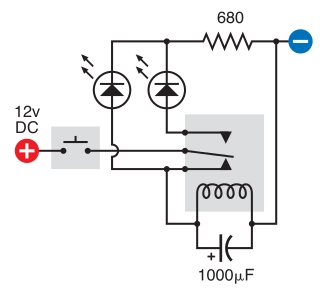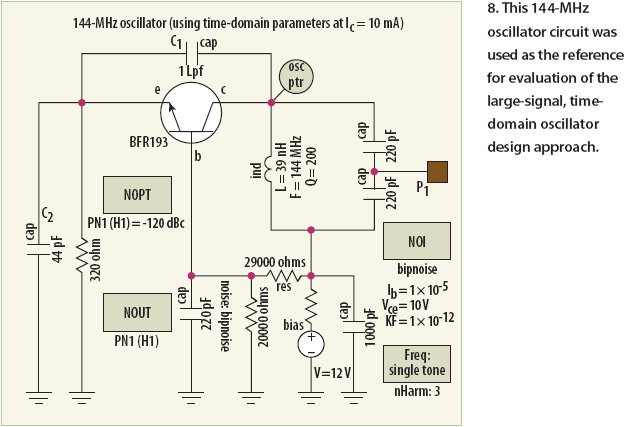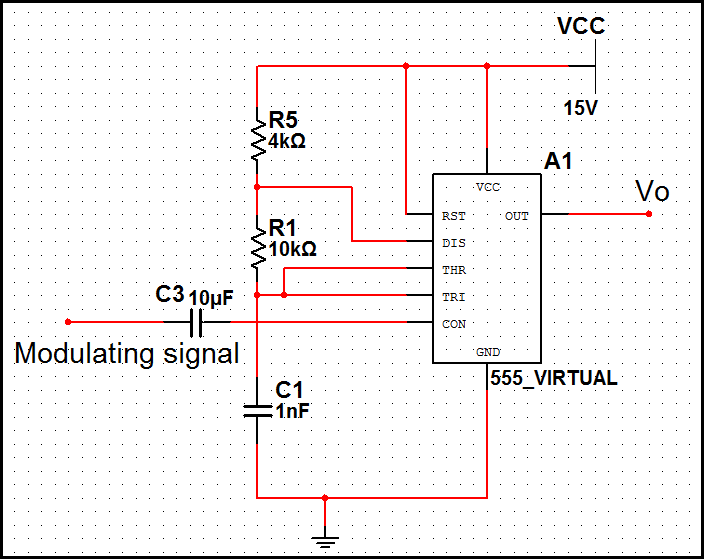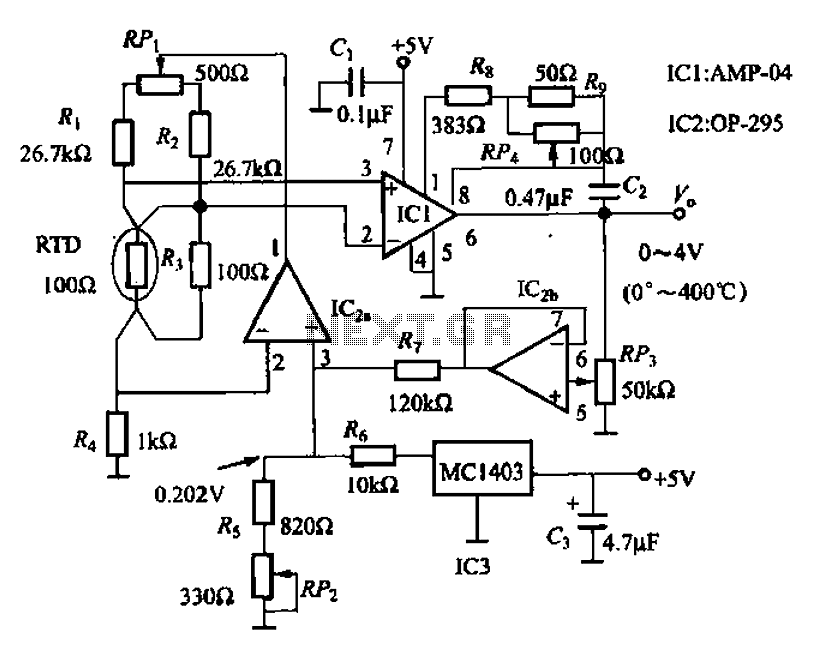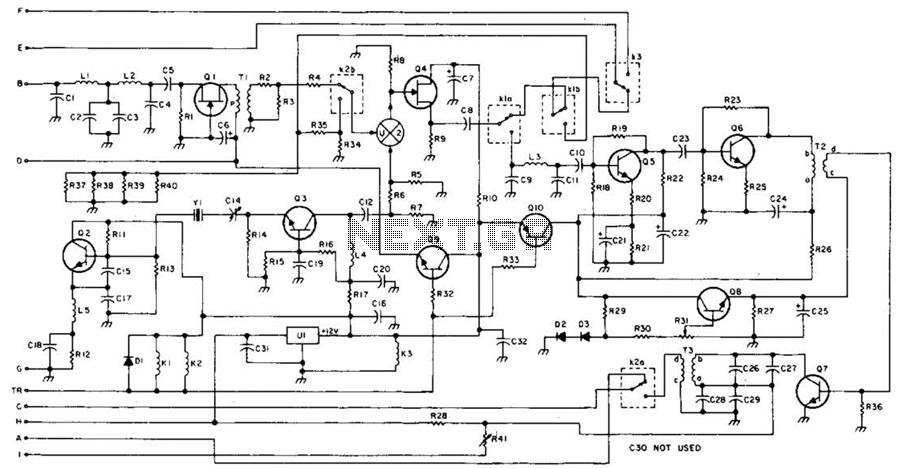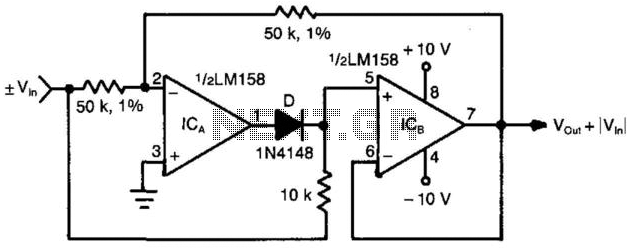
Schematic circuit diagram of low voltage and low voltage automatic conversion

The circuit is automatically converted to a low-voltage configuration. A 220V AC supply is stepped down by transformer T. After this, the breakdown voltage of diode VDw causes transistors VT1 and VT2 to turn off, resulting in the solid-state relay (SSR) S being deactivated. At this point, the bridge rectifier composed of diodes VD2 to VD5, along with capacitors C2 and C3, filters the output to provide a DC voltage of approximately 14V. When the AC input voltage is reduced to 110V, transformer T is unable to step down the voltage sufficiently, causing VDw to remain inactive, turning off VT1 while VT2 remains active, thus activating the SSR. In this scenario, the combination of SSR, diodes VD2 to VD3, and capacitors C2 and C3 forms a voltage doubler circuit, which continues to output a DC voltage of around 14V, allowing the LED to illuminate.
The circuit design involves several key components that work together to convert high voltage AC to a stable low voltage DC output suitable for powering LEDs or other low-voltage devices. The transformer T is essential for stepping down the initial 220V AC supply, which is then processed by the diodes in the bridge rectifier configuration. This arrangement ensures that the AC input is converted to a pulsating DC output. The role of capacitors C2 and C3 is critical, as they smooth out the rectified output, reducing ripple and providing a more stable DC voltage level.
In the event of a reduced input voltage of 110V AC, the circuit adapts by utilizing the remaining components effectively. Transistor VT2 continues to conduct, allowing the SSR to activate and maintain the output voltage through the voltage doubler configuration formed with diodes VD2 and VD3. This clever arrangement allows the circuit to maintain functionality even under lower input voltage conditions, ensuring that the LED remains illuminated.
Overall, the circuit exemplifies a robust design that can efficiently manage voltage conversion and regulation, making it suitable for various low-voltage applications while ensuring reliability across different input voltage scenarios. Below is automatically converted to low-voltage circuit. 220V electricity through step-down transformer T after, VDw breakdown camel guide so VT1, VT2 off, solid state relays S SR is turned off, this time by VD2 ~ VD5 bridge rectifier, C3 C2 filtered stream output DC voltage of approximately 14V; when when the AC input voltage is 110V, by T buck insufficient wear VDw, VT1 off, VT2 conduction, SSR is turned on. In this case, SSR, VD2 ~ VD3 and C2, C3 composed of a voltage doubler circuit, the output DC voltage of about 14V is still.
And LED lights.
The circuit design involves several key components that work together to convert high voltage AC to a stable low voltage DC output suitable for powering LEDs or other low-voltage devices. The transformer T is essential for stepping down the initial 220V AC supply, which is then processed by the diodes in the bridge rectifier configuration. This arrangement ensures that the AC input is converted to a pulsating DC output. The role of capacitors C2 and C3 is critical, as they smooth out the rectified output, reducing ripple and providing a more stable DC voltage level.
In the event of a reduced input voltage of 110V AC, the circuit adapts by utilizing the remaining components effectively. Transistor VT2 continues to conduct, allowing the SSR to activate and maintain the output voltage through the voltage doubler configuration formed with diodes VD2 and VD3. This clever arrangement allows the circuit to maintain functionality even under lower input voltage conditions, ensuring that the LED remains illuminated.
Overall, the circuit exemplifies a robust design that can efficiently manage voltage conversion and regulation, making it suitable for various low-voltage applications while ensuring reliability across different input voltage scenarios. Below is automatically converted to low-voltage circuit. 220V electricity through step-down transformer T after, VDw breakdown camel guide so VT1, VT2 off, solid state relays S SR is turned off, this time by VD2 ~ VD5 bridge rectifier, C3 C2 filtered stream output DC voltage of approximately 14V; when when the AC input voltage is 110V, by T buck insufficient wear VDw, VT1 off, VT2 conduction, SSR is turned on. In this case, SSR, VD2 ~ VD3 and C2, C3 composed of a voltage doubler circuit, the output DC voltage of about 14V is still.
And LED lights.
Warning: include(partials/cookie-banner.php): Failed to open stream: Permission denied in /var/www/html/nextgr/view-circuit.php on line 713
Warning: include(): Failed opening 'partials/cookie-banner.php' for inclusion (include_path='.:/usr/share/php') in /var/www/html/nextgr/view-circuit.php on line 713
